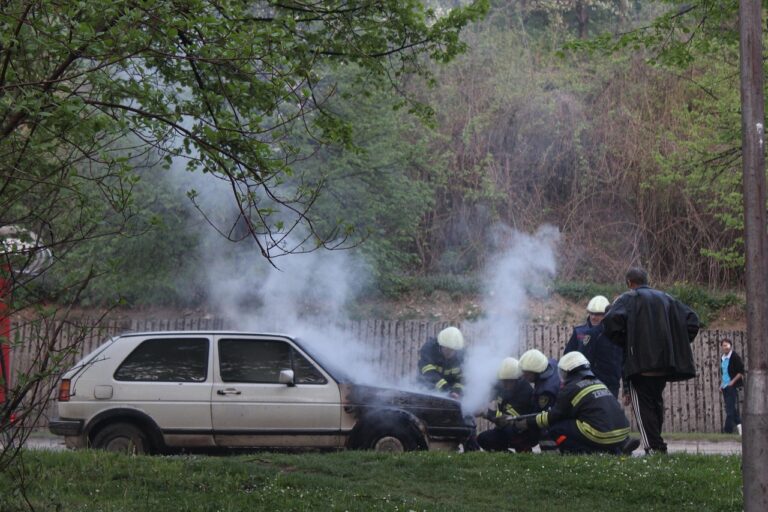The Hidden Impact of Airbag Deployment on Your Body
While airbags are essential automotive safety features, their deployment carries a hidden impact on the human body that is not widely discussed. These life-saving devices, in their swift inflation during a crash, can cause an array of physical injuries ranging from minor abrasions to significant fractures. This raises a important question: how can we optimize the protective benefits of airbags while minimizing their potential harm? It is imperative that we gain a deeper understanding of this issue, paving the way for more effective safety measures and guidelines in vehicular travel.
Understanding Airbag Mechanics
In order to fully comprehend the hidden impacts of airbag deployment, it is essential to understand the mechanics behind the operation of airbags. The process begins with airbag sensors, which are designed to detect sudden deceleration in the event of a collision. These sensors send a signal to the airbag control unit, initiating the deployment process. The deployment timing is critical: the airbag must inflate rapidly to cushion the impact, typically within 30 to 50 milliseconds of the sensed collision. This rapid inflation is facilitated by a chemical reaction within the airbag module, producing gas to fill the bag. The deployment timing and sensor sensitivity are meticulously calibrated to guarantee maximum protection during a crash, highlighting the sophistication of airbag mechanics.
The Purpose of Airbags
Building upon the complexity of airbag mechanics, we now focus our attention on the purpose of airbags within the broader context of vehicle safety systems. Airbags, central to modern vehicular safety regulations, serve the critical function of reducing the severity of injuries during collisions. Leveraging advanced airbag technology, these devices rapidly inflate upon impact, acting as a cushion between the occupants and the vehicle’s rigid interior components. This immediate response mitigates the risk of devastating injuries, particularly to the head and chest region. Additionally, airbags distribute the force of the collision over a larger area, decreasing the overall impact on the occupant’s body. Conclusively, airbags, through their intricate design and purpose, are integral components in the pursuit of enhanced vehicular safety.
Immediate Physical Impact
Despite the life-saving function of airbags, they are not devoid of immediate physical impact on the occupants. Upon collision, airbag impact is a rapid, high-energy event typically completed within 30 to 50 milliseconds. The body reaction is multidimensional, involving both kinetic and biomechanical responses. The kinetic reaction is an involuntary recoil motion away from the airbag, while the biomechanical response involves the absorption and distribution of energy across various body tissues, primarily the chest and facial region. This immediate physical impact, although designed to be less harmful than direct impact with the vehicle interior, can manifest as transient discomfort or disorientation. The forces involved in this process, while necessary for protection, have potential for causing physical discomfort and minor injuries.
Common Injuries From Airbags
Airbag-induced injuries, while less severe than those suffered from direct collision impact, are a common occurrence in vehicular accidents. Despite airbags’ role in promoting safety, they can become the source of various deployment injuries. The high-speed force of deployment can lead to abrasions or burns on the face and upper body. More severe cases may involve fractures or internal injuries, particularly when the occupant is positioned too close to the airbag at the moment of inflation. Airbags can also potentially exacerbate pre-existing conditions, such as asthma, due to the chemicals released upon deployment. Consequently, while airbag safety technology has dramatically reduced fatalities, understanding these potential injuries is essential in further enhancing passenger safety.
The Risk of Hearing Damage
One often overlooked consequence of airbag deployment is the potential for hearing damage, specifically airbag-induced tinnitus and even permanent hearing loss. This result can occur due to the abrupt and high decibel noise generated during airbag inflation, a sound intensity that often exceeds safe hearing thresholds. It is therefore essential to explore preventative measures and solutions to mitigate this under-recognized risk associated with airbag deployment.
Understanding Airbag-Induced Tinnitus
While many are aware of the lifesaving benefits of airbags in vehicular accidents, fewer recognize the potential auditory risks associated with their deployment. One such risk is the onset of tinnitus, a persistent ringing in the ears, triggered by the abrupt, loud airbag noise. The severity of tinnitus effects varies, ranging from mild, temporary ringing to chronic, debilitating sound perception. Research indicates that the explosive force necessary for airbag deployment can reach 165-175 dB, well above the human pain threshold of 120-130 dB. This sudden and intense noise exposure can overstimulate the ear’s delicate mechanisms, leading to tinnitus. Understanding the link between airbag noise and tinnitus is essential in mitigating this overlooked vehicular safety concern.
Potential Permanent Hearing Loss
Beyond tinnitus, the explosive sound generated during airbag deployment presents a major risk for permanent hearing loss. This risk emerges from the sudden high-intensity noise exposure, often reaching levels between 160 to 170 decibels, markedly higher than the 85-decibel threshold known to cause auditory damage. The proximity of the sound source to the ear intensifies this risk, with the abrupt pressure wave directly impacting the delicate structures within the auditory system. Without sufficient hearing protection, the likelihood of irreversible cochlear damage, leading to sensorineural hearing loss, escalates. In addition, the high-frequency noise characteristic of airbag deployment poses a particular threat to high-frequency hearing. In effect, the immediate safety provided by airbags may carry long-term auditory consequences.
Preventative Measures and Solutions
Given the significant risk of auditory damage associated with airbag deployment, preventative measures and solutions merit serious consideration. Preventative strategies could include wearing ear protection during high-risk activities or installing car models with advanced airbag safety features. Research indicates that newer airbag systems minimize noise levels upon deployment, thereby mitigating the risk of hearing loss. Additionally, improving airbag design to reduce abrupt sound pressure levels can be beneficial. Furthermore, public awareness campaigns on airbag safety and the potential risk of hearing damage can promote informed decision-making. Finally, routine auditory checks can help detect early signs of hearing impairment, facilitating timely intervention. It is essential to balance the undeniable benefits of airbags in saving lives with the potential auditory risks they pose.

Facial and Eye Injuries
The rapid deployment of airbags, while essential for protection during accidents, has the potential to cause facial and ocular injuries. These injuries can range from common facial traumas such as lacerations, fractures and burns, to more severe eye injuries that can even result in vision loss. Our subsequent analysis will focus on understanding the mechanisms of these injuries, their frequency, and the preventative measures that can be taken to mitigate these risks.
Common Facial Traumas
Unavoidable during airbag deployment, facial traumas rank high amongst the most commonly reported injuries. The majority of these injuries involve facial lacerations and soft tissue damage, which can pose a significant risk for long-term scarring and disfigurement. Facial lacerations, often deep and irregular, result from the rapid inflation of the airbag and subsequent contact with the face. These wounds typically require meticulous suturing to prevent undesirable cosmetic outcomes, and in some cases, further cosmetic intervention may be necessary to restore one’s appearance. For those recovering from facial trauma, seeking trusted cosmetic dental care in Seattle, WA can be a crucial step in regaining confidence and addressing any dental or oral injuries sustained during an accident. Similarly, soft tissue injuries, including contusions, abrasions, and burns, frequently occur due to the forceful impact of the deployed airbag against the skin. The severity of these injuries directly correlates with the occupant’s proximity to the airbag at the time of deployment, making proper seating position a critical factor in injury prevention.
Protecting Your Eyesight
How can we safeguard our vision amidst the inherent risks associated with airbag deployment? Eye safety is paramount in these scenarios, where high-speed inflations can potentially cause vision-threatening impacts. It’s essential to understand that airbag systems are designed to deploy in a fraction of a second, limiting the time for protective reflexes. Consequently, vision protection strategies need to be proactive rather than reactive. Regular use of seat belts and maintaining a safe distance from the steering wheel can help reduce the risk of direct eye impact. Additionally, eyewear with shatter-resistant polycarbonate lenses can offer protection against flying debris, which is often an overlooked threat. Fundamentally, an approach combining behavioral changes with protective gear can greatly enhance eye safety during airbag deployment.
Protecting Children and Infants
An alarming number of children and infants are affected by airbag deployment each year. Airbags, designed as a safety measure for adults, can pose a significant risk to the smaller, more delicate bodies of children and infants. Child safety and infant protection in this situation necessitate a detailed understanding of the physical dynamics involved in airbag deployment. The rapid inflation, despite being a fraction of a second, releases substantial force. For a child or infant, especially those improperly restrained or positioned in front seats, the impact can be severe, leading to critical injuries. Hence, the placement, restraining, and orientation of child seating are paramount. Ultimately, the goal is to mitigate the risk of airbag deployment impact on children and infants, thereby ensuring their safety.
Minimizing Injuries During Deployment
Understanding the risks posed by airbag deployment to children and infants, as discussed in the previous section, naturally leads us to explore effective strategies for injury minimization. Ideal airbag positioning and seatbelt usage are essential in this regard.
Airbags should be positioned in a way that maximizes their protective function while minimizing the risk of direct impact with occupants. This typically involves orienting them toward the chest and away from the face. Seatbelt usage, meanwhile, is vital. A properly worn seatbelt restrains the occupant, reducing forward motion and thereby limiting interaction with the deploying airbag. The seatbelt should be snug against the body, with the lap belt across the hips and the shoulder belt across the chest. Paying heed to these details can considerably reduce potential injuries during airbag deployment.
Recovery and Rehabilitation After Deployment
While the immediate effects of airbag deployment are essential, the subsequent recovery and rehabilitation phase is of equal importance. Various factors influence recovery timelines, such as the severity of injuries, individual health conditions, and the effectiveness of initial treatment. Customized rehabilitation exercises are integral to regaining lost functions and preventing long-term disability. These exercises, often under the guidance of a physical therapist, target affected areas, rebuilding strength and flexibility gradually. The recovery process is not linear, with progress varying between individuals. Regular assessment and adjustments to the rehabilitation approach guarantee ideal recovery. Understanding the impact of airbag deployment on the body and the importance of structured rehabilitation can greatly aid in a successful recovery post-incident.
Frequently Asked Questions
What Are the Psychological Impacts of Experiencing an Airbag Deployment?
Experiencing an airbag deployment can lead to emotional trauma, manifesting in anxiety symptoms such as panic attacks, constant fear, and persistent worry. This psychological impact can affect daily functioning and overall mental health considerably.
How Often Should Airbags Be Replaced or Checked?
Airbags, important safety features, do not require regular replacement. However, following maintenance guidelines is essential. The typical airbag lifespan extends throughout the vehicle’s life, but manufacturers recommend inspection by professionals after 10 years.
What Potential Risks Are Posed by Counterfeit or Fake Airbags?
Counterfeit airbags pose significant risks as they may not meet safety regulations. They can fail to deploy correctly, causing injury during an accident, or deploy unexpectedly, creating dangerous situations during normal driving conditions.
How Can Airbag Deployment Impact Pregnant Women?
Airbag deployment can pose risks to pregnant women, potentially affecting fetal safety. Incorrect seatbelt positioning can exacerbate these risks, leading to direct fetal impact or placental abruption due to sudden, forceful deceleration.
Do Airbags Release Any Harmful Chemicals During Deployment?
Yes, airbags can release harmful chemicals during deployment. This chemical exposure originates from the combustion of airbag materials, potentially including substances like sodium azide, which can cause respiratory and skin irritation.

